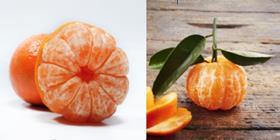
The owners of the Tango mandarin variety have welcomed a recent ruling by the European Union's Community Plant Variety Office (CPVO) in its long-running battle with the owners of the Nadorcott variety.
On 31 May, the Board of Appeal of the CPVO upheld a previous decision, made in October 2014, granting European protection to the Tang Gold (Tango) variety.
Reviewing a report published by the Valencia Institute of Agricultural Research (IVIA), CPVO confirmed its decision that Tango is sufficiently different to Nadorcott to make it eligible for registration and protection throughout the European Community. It held that Tango has two distinctive characteristics to Nadorcott: namely that it is completely seedless and that its pollen is sterile and cannot pollinate neighbouring plants even under cross-pollination. However, it ruled out another two of the four initially identified differences between the two varieties.
Breeder Eurosemillas, who introduced the first commercial plantings of Tango in Spain in 2007, said in a statement the decision recognised the “clear and significant differences already identified by independent trials and upheld by the US Patent Office, the competent EU and South African authorities”.
“So far, none of the more than 20 proceedings that the CVVP or the owners of Nadorcott have brought in Spain, the EU, South Africa or Australia have succeeded,” the statement said.
CVVP issued a statement claiming a partial victory in the dispute. “University of California Riverside [which developed Tango] argued that there were additional differences between Tang Gold and Nardorcott than those originally identified in the October 2014 decision but this was roundly rejected by the Board of Appeal’s decision,” CVVP said.
These additional differences relate to the appearance of the fruit, namely a dip in its base and the appearnce of grooves on the skin near the stalk, both of which the appeal board deemed too minor to qualify for consideration.
CVVP went on to say that the licensing agreement is “therefore not firmly established and open to appeal at the EU courts”.
The decision has considerable implications for the Spanish citrus industry, which produces around 6.5m tonnes of mandarins a year of which nearly 4m tonnes is exported. Tango and Nadorcott – two late varieties that are harvested in February and early March – are at the heart of a five-year restructuring plan to convert production in Valencia to more profitable varieties.
Both varieties originate from W. Murcott, a cross between a mandarin and a sweet orange developed in 1912 in the US. Moroccan company Les Domaines Agricoles, owners of the patent for Nadorcott, claims Tango is an American derivation of Nadorcott. But American experts argue that Tango is a distinct variety developed independently in the US.
Both the US and European patent offices have already concluded that the two varieties are indeed distinct, but Morocco is unwilling to give up its claim and has filed lawsuits in the major citrus producing countries in order to protect its monopoly on the late season cultivar.
The main difference between the two varieties is that Tango is doubly sterile meaning it doesn’t produce seeds or other varieties. This is an advantage for producers as it allows them to save money on measures to prevent cross-pollination.



